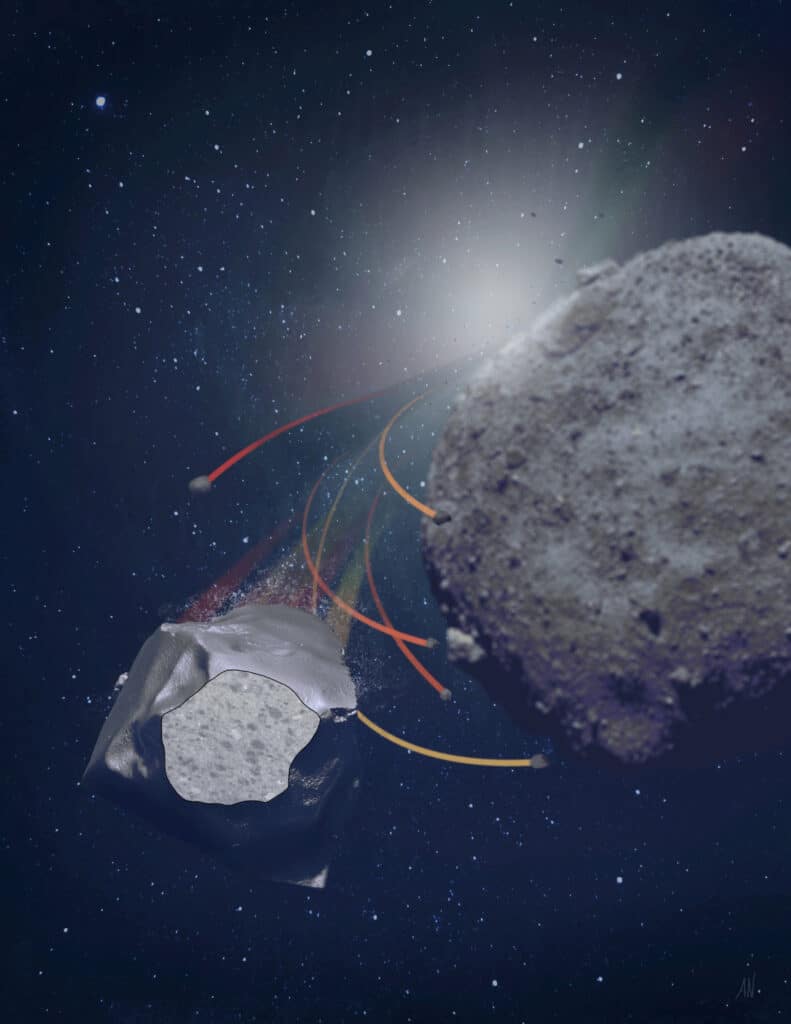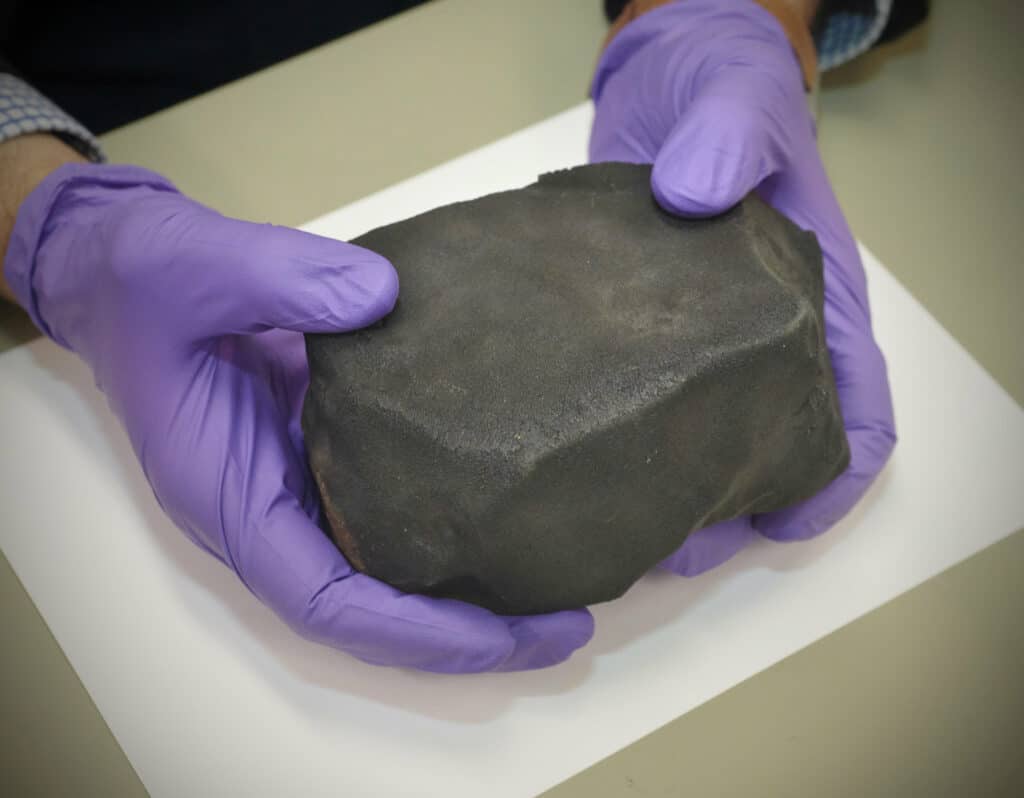Meteorites “spit” pebble-sized rocks into space, according to new research. They flick out fragments as they hurtle through the cosmos at up to 160,000 miles an hour.
The bizarre behavior was identified in Aguas Zarcas, a meteorite which fell to Earth three years ago. It is more than 4.5 billion years old and formed out of dust from the early Milky Way.
“We would expect this in other meteorites. People just haven’t looked for it yet,” says study senior author Philipp Heck, the Robert A. Pritzker Curator of Meteoritics at Chicago’s Field Museum, in a statement.
In 2019, NASA’s OSIRIS-REx spacecraft sent back images of swarms of marble-like rocks flying off the asteroid Bennu as it travelled through the solar system. Now the phenomenon has been detected in meteorites that break off from asteroids and occasionally moons, or even planets.
“It’s fascinating to see something that was just discovered by a space mission on an asteroid millions of miles away from Earth, and find a record from the same geological process in the museum’s meteorite collection,” says Heck.

The cause is a mystery. One theory is ice just under the surface turns to gas and acts as a propellant.
Aguas Zarcas is named after the Costa Rican town where it dropped. The meteorite was donated to the museum by private collectors Terry and Gail Boudreaux. Dr. Heck and graduate student Xin Yang were preparing it for another study when they noticed something strange.
“We were trying to isolate very tiny minerals from the meteorite by freezing it with liquid nitrogen and thawing it with warm water, to break it up,” says Yang. “That works for most meteorites, but this one was kind of weird – we found some compact fragments that wouldn’t break apart.”
Finding bits that won’t disintegrate sometimes happens. Scientists usually just shrug and break out the mortar and pestle.
“Xin had a very open mind. He said, ‘I’m not going to crush these pebbles to sand, this is interesting,'” recalls Heck.
Instead, the researchers devised a plan to figure out what they were and why they were so strong. “We did CT (computed tomography) scans to see how the pebbles compared to the other rocks making up the meteorite,” Heck adds. “What was striking is these components were all squished – normally, they’d be spherical – and they all had the same orientation. They were all deformed in the same direction, by one process.”
Something had happened to the pebbles that didn’t happen to the rest of the rock around them. “This was exciting, we were very curious about what it meant,” says Yang.
By analyzing the OSIRIS-REx findings they put together a hypothesis supported with physical models. They showed the asteroid underwent a high-speed collision, and the area of impact got deformed.
That rock eventually broke apart due to the huge temperature differences the asteroid experiences when it rotates. The side facing the sun is more than 300° F warmer.

“This constant thermal cycling makes the rock brittle, and it breaks apart into gravel,” explains Heck.
These pebbles are then ejected from the asteroid’s surface, but the authors are still unsure as to how this happens. They might be dislodged by smaller impacts other space collisions, or just get released by the thermal stress the asteroid undergoes.
But once the pebbles are disturbed, “you don’t need much to eject something – the escape velocity is very low,” says Heck.
A recent study of Bennu revealed its surface is loosely bound and behaves like “popcorn in a bucket.” The pebbles then entered a very slow orbit around the asteroid and, eventually, fell back down to its surface further away where there was no deformation. Then the asteroid underwent another collision, and the loose mixed pebbles on the surface got transformed into a solid rock.
“It basically packed everything together, and this loose gravel became a cohesive rock,” notes Heck.
The same impact may have dislodged the new rock, sending it careening into space. Eventually, that chunk fell to Earth as the Aguas Zarcas meteorite, carrying evidence of the pebble mixing. This could explain the pebbles present in Aguas Zarcas, making the meteorite the first physical evidence of the geological process observed by OSIRIS-REx on Bennu.
“It provides a new way of explaining the way that minerals on the surfaces of asteroids get mixed,” says Yang.
That’s a big deal, the authors agree. For a long time, it was assumed the main way the minerals on the surfaces of asteroids get rearranged is through big crashes, which don’t happen very often. “From OSIRIS-REx we know these particle ejection events are much more frequent than these high-velocity impacts, so they probably play a more important role in determining the makeup of asteroids and meteorites,” Heck concludes.
The study is published in the journal Nature Astronomy.
Report by Mark Waghorn, South West News Service












